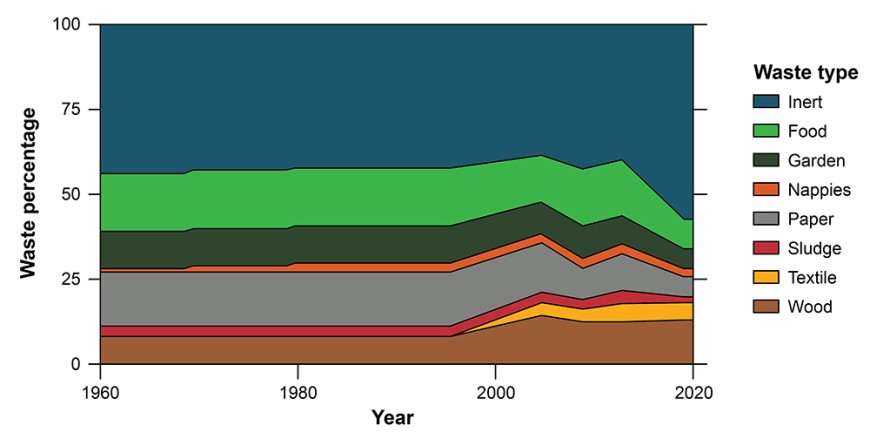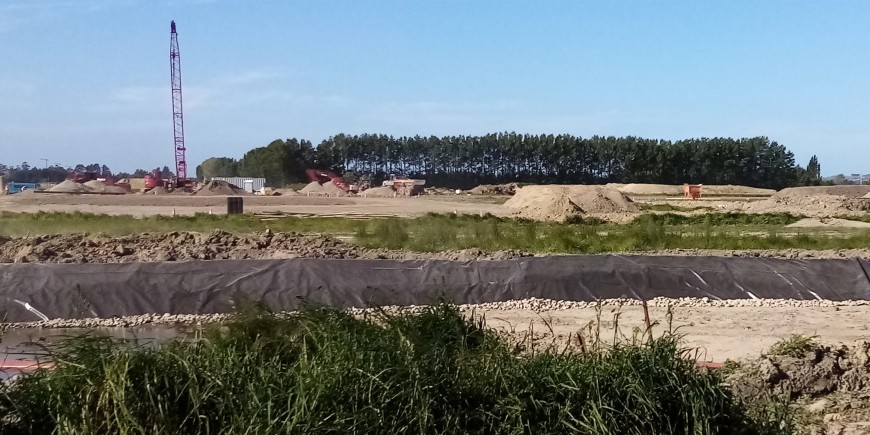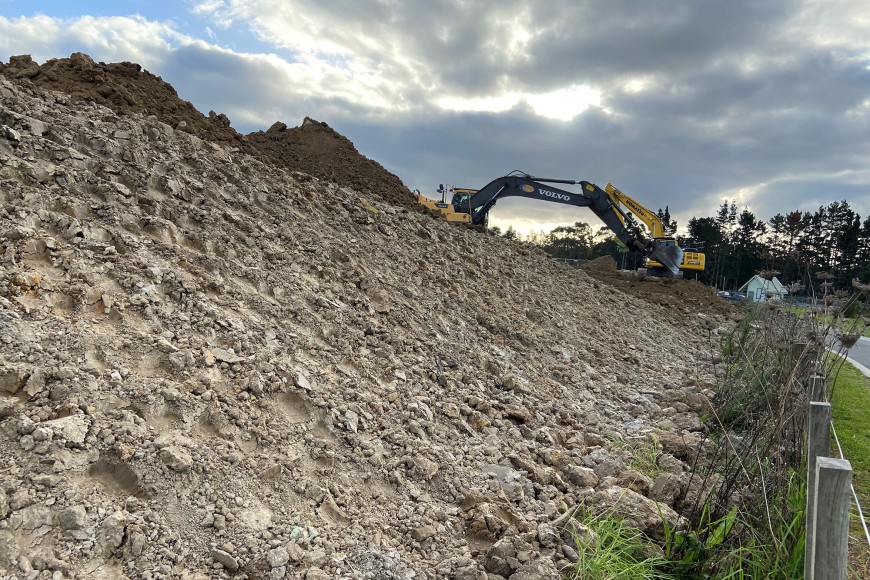Guidance on the sustainable management of surplus soils in New Zealand
The focus of the project was to develop a greater understanding of the factors leading to the generation of surplus soils, and the barriers to reusing them, in order to develop guidance to support the emerging practice of sustainable management of surplus soils. The work involved te ao Māori and mātauranga Māori from inception to completion.
Concerns expressed about surplus soil include the lack of sustainability, unnecessary disposal costs, emissions associated with transporting surplus soil, lack of data on the amount of material encompassed as ‘surplus’ soil, lack of agreement on what should be measured, and regulatory challenges with reuse – even for low-risk (i.e. lightly contaminated) soils. Perhaps the most tangible evidence of the challenges faced is an increase in the proportion of inert materials (which include soil) disposed to Class 1 landfills since 2012 (Figure 1). This closely coincided with the introduction of the National Environmental Standard for Managing Soil Contaminants for the Protection of Human Health (NES-SC) in 2011. Anecdotally, large volumes of soil are also disposed to other classes of landfills, although hard data are currently lacking.

Figure 1. Proportion of different types of waste disposed to Class 1 landfills. The NES-SC was introduced in 2011. (Adapted from Dee & Lidgard 2021)
Through the project there was strong engagement with different industry sectors, including contaminated land management and waste disposal to land, as well as central and local government and government agencies, including regional and unitary councils, city and district councils, the Ministry for the Environment, Land Information New Zealand, Kainga Ora – Homes and Communities, and Māori.
A stakeholder workshop identified the primary source of surplus soils as being greenfield[1] residential subdivisions, followed by brownfield[2] residential developments.(The Parliamentary Commissioner for the Environment is also currently conducting an investigation into the fate of urban soil resulting from the subdivision and development process, following publication of a report on the importance of urban green spaces (PCE 2023)). The workshop also identified that the bulk of soil disposed to landfills
is considered to have contaminant concentrations above background concentrations but below applicable soil contaminant standards (residential, followed by commercial/industrial) for the protection of human health. In other words, the majority of soil disposed to landfill is low-risk.
A key finding of the project was that a good understanding of soil science is lacking in many land and infrastructure development activities. At present, soils in most projects are primarily assessed for geotechnical characteristics and (frequently) contamination. The project report (Cavanagh et al. 2023) includes case studies of surplus soil reuse and outlines next steps to guide councils, government, Māori, and industry to enable the sustainable management of surplus soils. A key recommendation was that a national soils strategy should be developed to effect higher-level change and generate the impetus and pathway to effectively and sustainably manage our soils.
Examples of soil disturbance during infrastructure development are shown in Figure 2 and Figure 3.

Figure 2. Broad-acre greenfield residential development at Lincoln, Canterbury, showing soil disturbance during infrastructure (roads, drainage, water supply) development.

Figure 3. An anthropic soil profile being produced at Albany, Auckland. Mixed, fine-textured Ultic subsoils from Waitemata geology have been rolled with a ‘sheep’s foot roller’ to compact them and help bind the topsoil.
Footnotes
[1] ‘Greenfield’ is used to refer to land that has not been previously developed for urban or industrial uses and is usually identified for future urban use. ‘Greenfields’ is often agricultural or horticultural production land or low-density ‘lifestyle’ land on the edges of urban areas.
[2] Brownfield development occurs on land that has already been developed and therefore has existing infrastructure.
References
Cavanagh J, Simcock R, Thompson-Morrison H, Harmsworth G 2023. Guidance on the sustainable management of 'surplus' soil and subsoil: consultation draft. Manaaki Whenua – Landcare Research Contract Report LC4326. Prepared for the Contaminated Land and Waste Special Interest Group, Land Monitoring Forum. Envirolink Grant: C09X2206.
Dee T, Lidgard R 2021. Creating a circular economy for contaminated soil. Paper presented at Tomorrow, Today, WasteMINZ Virtual Summit, 9–11 May 2022.
PCE (Parliamentary Commissioner for the Environment) 2023. Are we building harder, hotter cities? The vital importance of urban greenspace. Wellington, Parliamentary Commissioner for the Environment.

